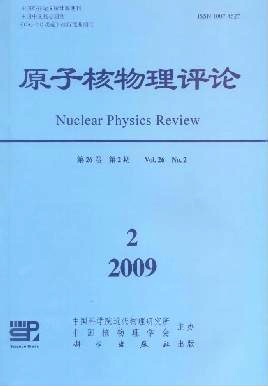Possible Synthesis of Z=117 through 48Ca+249Bk
doi: 10.11804/NuclPhysRev.26.02.107
- Received Date: 1900-01-01
- Rev Recd Date: 1900-01-01
- Publish Date: 2009-06-20
-
Key words:
- superheavy element /
- langevin equation /
- cross section
Abstract: A possible way to synthesize superheavy element (Z=117) by using 48Ca+249Bk reaction is studied with two step model. The fusion process is divided into two steps: the sticking process that the projectile approaches to the target to get contacted with the target by passing over the Coulomb barrier, and the formation process that the dinuclear system evolves from contact into compound nuclear state. Combined with the statistical evaporation model, the formation cross section of 297117 is calculated. The result shows that the residue for 3 neutron evaporation is 0.34 pb at excitation energy E*=31 MeV, which is detectable in laboratory.
| Citation: | ZHANG Qun-wu, SHEN Cai-wan, #, ZHAO En-guang . Possible Synthesis of Z=117 through 48Ca+249Bk[J]. Nuclear Physics Review, 2009, 26(2): 107-111. doi: 10.11804/NuclPhysRev.26.02.107 |






 甘公网安备 62010202000723号
甘公网安备 62010202000723号 DownLoad:
DownLoad: